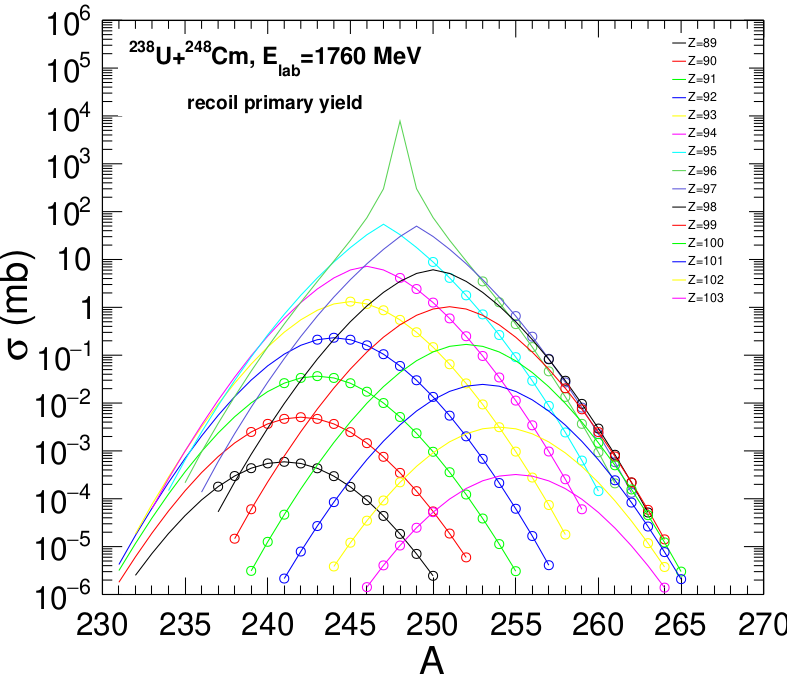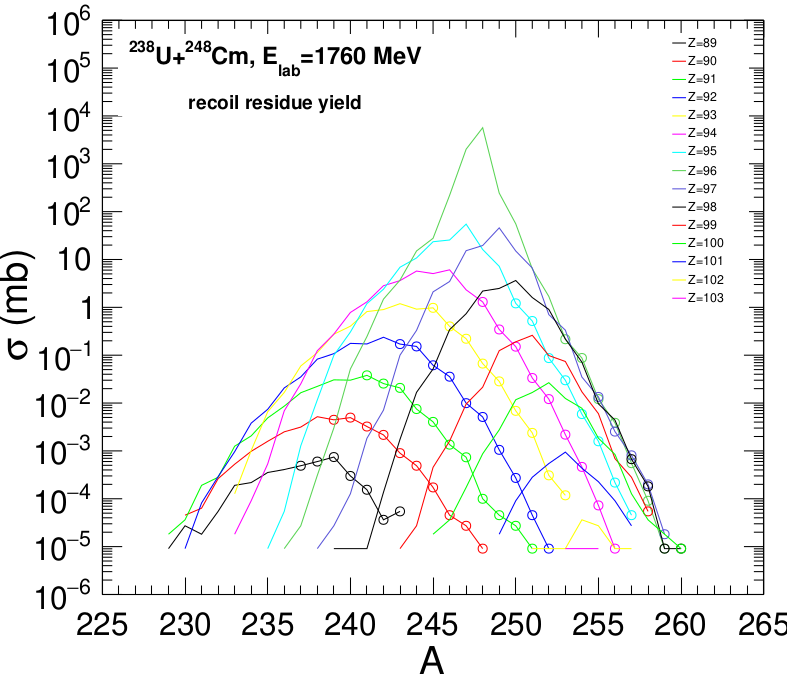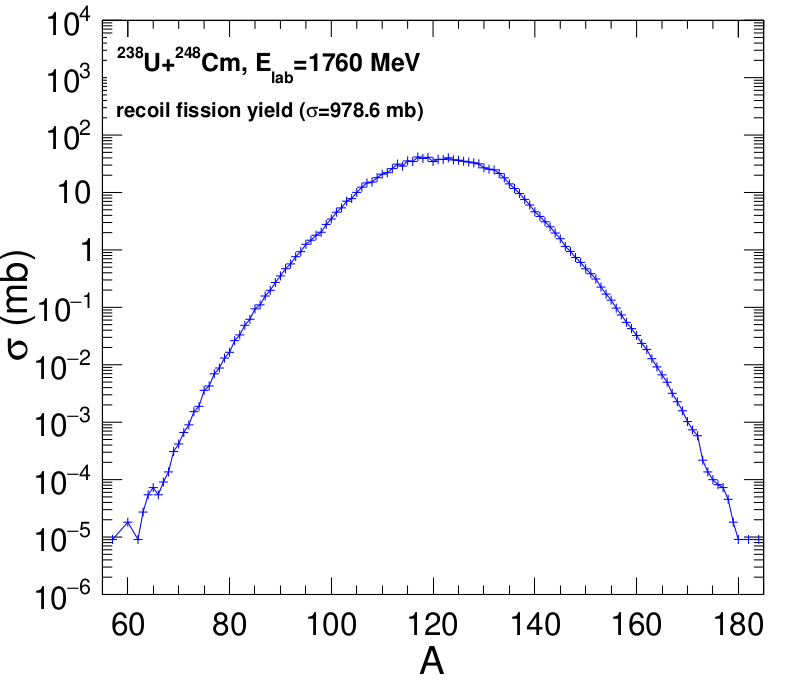GRAZING + GEMINI Simulation
The GRAZING code is based on the macroscopic model of grazing collisions proposed by Aage Winther [1]. The classical motion of colliding nuclei is combined with form factors for single-particle transfers and excitation of collective states along trajectories at the point of closest approach. GRAZING describes the mass and change distributions, and the energy and angular momentum loss, for grazing collisions between heavy nuclei at bombarging energies near the interaction barrier.
GRAZING + GEMINI Simulation
The following calculation gives the GRAZING mass and charge distributions of primary and de-excited fragments (the latter by performing a GEMINI simulation).
The de-excitation stage is similar to GRAZING-F [2], except it is done with GEMINI [3] instead of the simple neutron emission and fission competition model proposed by GRAZING-F. GEMINI considers the competition between fission, neutrons, and light and intermediate charged-particles, as opposed to only fission and neutrons.
Demo
The following plot shows the default GRAZING calculation, 238U + 248Cm at laboratory energy of 1760 MeV, for recoils,

In this plot, each solid line corresponds to a primary fragment of a given Z. The open symbols mark fragments whose experimental nuclear masses are unknown.
The yields of primary GRAZING fragments is the input for the GEMINI simulation. The next two plots show the yield of residues, that is, heavy fragments that survived fission, and the fission fragment mass yields, in a simulation with 1,000,000,000 tries,


The overall mass yield is shown in the next plot,

Execution
When a GRAZING or GRAZING+GEMINI calculation/simulation is purchased, the order is sent to a computer cluster job scheduler for execution. Once the calculation/simulation is completed, the results are made available.
Output
The output of GRAZING is a data file with three columns; the Z and A of primary product and its cross-section in mb. Likewise, the output of the de-excitation stage with GEMINI is data files with three columns; the Z and A of primary product and its cross-section in mb, one for the residues and one for the fission fragments, respectively.
List of Files
Included in this calculation/simulation package are the following files:
- grazing.in (GRAZING input file)
- grazing.out (GRAZING output file)
- grazing.dat (GRAZING cross-section data file)
- grazing.pdf (GRAZING primary yield plot)
- README (documentation)
- terms.md (terms of use)
- license.md (license)
If applicable,
- grazGemini.log (GEMINI execution logfile)
- grazGemini-fis.dat (GEMINI fission fragment cross-section data file)
- grazGemini-res.dat (GEMINI residue cross-section data file)
- grazGemini-fis.pdf (GEMINI fission fragment mass yield plot)
- grazGemini-res.pdf (GEMINI residue cross-section plot)
- grazGemini.pdf (GEMINI mass yield plot)
References
- Aage Winther, "Grazing reactions in collisions between heavy nuclei", Nucl. Phys. A 572, 191 (1994).
- R. Yanez, W. Loveland, "Predicting the production of neutron-rich heavy nuclei in multinucleon transfer reactions using a semi-classical model including evaporation and fission competition, GRAZING-F", Phys. Rev. C 91, 044608 (2015).
- R. J. Charity, "Systematic description of evaporation spectra for light and heavy compound nuclei", Phys. Rev. C 82, 014610 (2010).
Terms of Use
Before buying, please read our Terms of Use. The results of any simulation may be used freely for any purpose, including, but not exclusively, in journal publications, presentations, and research proposals. We only ask to kindly refer to this page, for example,
https://www.computationalphysicsconsultants.com/simulations/grazing,
Computational Physics Consultants, LLC
or any suitable variation.